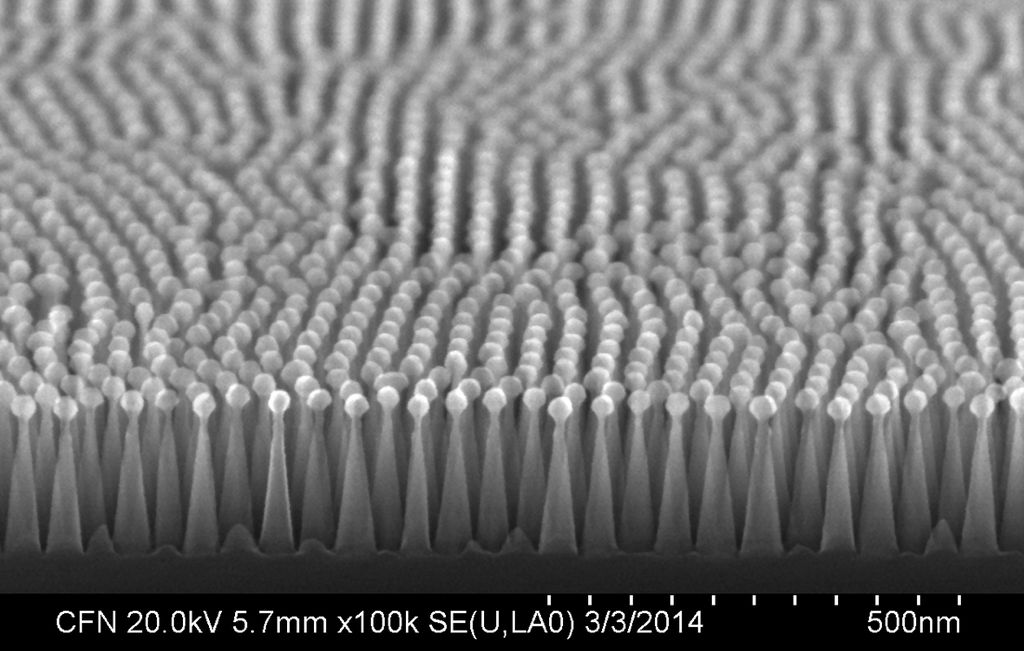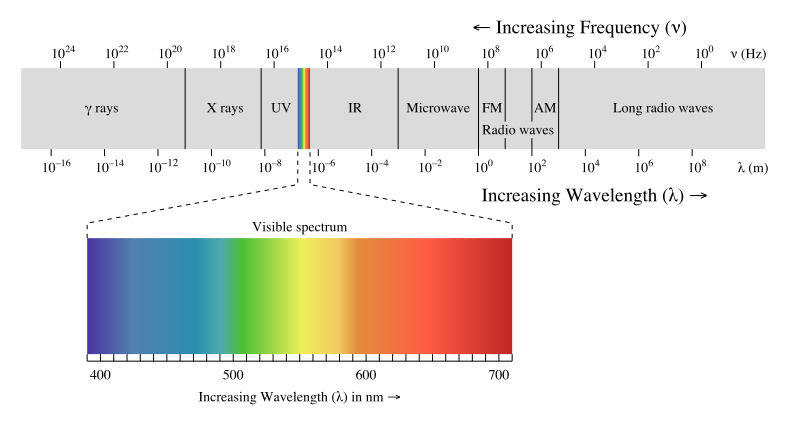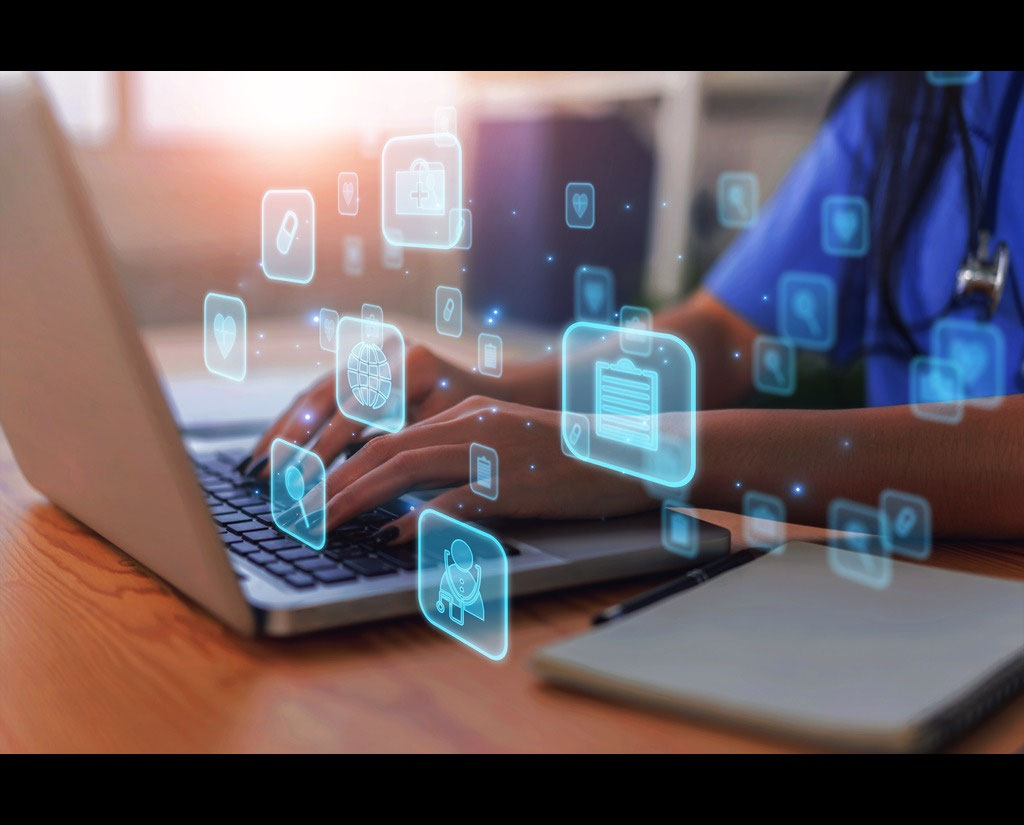
Overcoming Solar Power's Limits
In the ongoing drive to make solar power more productive and affordable, one of the greatest hurdles lies in breaking efficiency limits. Typically, single junction solar cells are limited to a maximum solar conversion efficiency of around 33.7%, or what is known as the Shockley–Queisser limit. Part of the reason for this has to do with the band gap of the material itself, which is most often silicon, and practical considerations like reflection.
For the past few years, one of the choicest methods for overcoming this has been to coat solar cells with nanomaterials that can increase the amount of energy they absorb. Ordinarily, these materials have consisted of specially-designed nanowires or microscopic beads. But taking a page from nature, scientists working at the U.S. Department of Energy's Brooklyn National Laboratory have come up with a new material inspired by the compound eyes of moths.
Researchers Look to Nature to Improve Solar Power Efficiency
Basically, the moth's compound eye has textured patterns that are made up of tiny posts, each one smaller than the wavelength of light. When light hits their eyes, much of it is absorbed and passes into its cornea without disruption or reflection. The moth’s eye evolved in this way so that it could see better at night, and so that its eyes wouldn’t glimmer and attract predators.

While other researchers have used similar approaches to create other coating materials for solar cells (or anti-glare TV screens), the researchers at Brookhaven used a self-organizing materials known as "block copolymer" - a material that is capable of arranging itself into ordered surface patterns with structures measuring only tens of nanometers.
These self-assembled patterns served as a template for forming posts in the solar cell using a plasma of reactive gases - a technique commonly used in the manufacture of semiconductor electronic circuits. By etching a nanoscale texture that resembled a moth's eye onto the silicon material, they were thereby able to create an anti-reflective surface that works as well as any state-of-the-art thin-film multi-layer coatings.
The resulting surface nanotexture served to gradually change the refractive index on the surface of a solar panel, drastically cutting down on reflection of many wavelengths of light simultaneously, regardless of the direction or the wavelenght of the light itself.
"For antireflection applications, the idea is to prevent light or radio waves from bouncing at interfaces between materials," said physicist Charles Black, who led the research at Brookhaven Lab's Center for Functional Nanomaterials (CFN).

According to Black, allowing solar cells to absorb more wavelengths of light is central to overcoming efficiency problems. In any photovoltaic reaction, energy is required to move an electron from the valence band to the conduction band. This means that only photons with more than this amount of energy will produce a photoelectron.
In silicon, the material most photovoltaic cells are made from, the conduction band is 1.1 electronvolts (eV) away from the valence band – which corresponds to infrared light. What this means is that photons of red, yellow and blue light will all contribute to electron production, whereas infrared, microwaves and radio waves (the non-visible parts of the EM spectrum) will be lost.
Solar panel coating that allow for more wavelengths to be captured exist, but are most often limited to a single wavelength per material. And while multiple materials can be combined to ensure that infrared, radiowaves, and microwaves can all be captured at once, these can cause interference as well. What's more, Black and his colleagues were looking for a material that can absorb many at the same time.

"The issue with using such coatings for solar cells," he said, "is that we'd prefer to fully capture every color of the light spectrum within the device, and we'd like to capture the light irrespective of the direction it comes from. But each color of light couples best with a different anti-reflection coating, and each coating is optimized for light coming from a particular direction. So you deal with these issues by using multiple anti-reflection layers. We were interested in looking for a better way."
After testing their new absorbent material, Black and his colleagues determined that it can outperform other single layer anti-reflective coatings by a margin 20 percent. Their single-material method, which was described in the journal Nature Communications, therefore has the potential to streamline silicon solar cell production, reduce the overall manufacturing costs, and speed the adoption of solar technology.
Perhaps unsurprisingly, the CFN researchers are not the only ones looking to moth's eyes for inspiration. Last year, a group of Swiss researchers published a report in the journal Energy & Environmental Science stating that iron oxide structures similar to moth eyes could be used to create highly efficient photovoltaic cells.

In 2013, researchers at the North Carolina State University led by Dr. Chih-Hao Chang, designed a thin film inspired by moth eyes to minimize “thin-film interference” in solar cells. This interference - which is what causes a "gasoline rainbow", where different wavelengths of light are reflected from a surface - can also occur with thin-film solar cells that are made up of multiple layers designed to absorb more wavelengths of light.
To keep this from happening, Chang’s team created films with built-in cone-shaped nanonostructures (similar to those found on moths’ eyes) that were able to penetrate into the underside of a film laid over top of it, thus meshing them together and eliminating much of the interference. Their research was described in a paper published in the mid-June issue of the journal Nanotechnology.
In 2011, a group of Japanese scientists at the Nagaoka University of Technology in Japan reported that they had created an antireflective film coating that utilized the same principles as a moth's eyes. This film was developed by Noboru Yamada, who collaborated with researchers at Mitsubishi Rayon Co. Ltd. and Tokyo Metropolitan University to used anodic porous alumina molds to nanoimprint the microstructure of moth’s eyes into acrylic resin.

Last, but not least, researchers in the Netherlands developed an anti-reflective coating based on the nanostructures of a moth's eye back in 2009. Using an eco-friendly production technique, Jaime Gomez Rivas and colleagues at the FOM Institute for Atomic and Molecular Physics (AMOLF) in Eindhoven created a coating that could turn heat (which is routinely lost in photovoltaic reactions) into electricity alongside visible light.
Solar Power's Future
Taken together, these efforts add up to a future where solar energy could very easily offset both fossil fuels and coal as the predominant producers of electricity. According to reports filed by the International Energy Agency, it is estimated that by 2050, solar energy will make up 25% of the market and therefore by the largest source of electricity on the planet. Key to speeding the adoption of solar power are cost-cutting methods that will simultaneously boost efficiency, making solar power both financially attractive as well as environmentally sound.
By taking their cue from nature, which has had billions of years to perfect its methods, researchers are ensuring that the needs of humanity can be met without further damaging or taxing the natural environment.
Sources:
- www.bnl.gov/newsroom/news.php?a=11685
- www.scientificamerican.com/podcast/episode/moth-eye-solar-cell/
- gigaom.com/2015/01/21/moth-eyes-inspire-scientists-to-cut-reflection-on-solar-panels/
- newsoffice.mit.edu/2010/explained-bandgap-0723
- www.techtimes.com/articles/27897/20150121/nanotextures-inspired-by-moth-eyes-prevent-reflection-for-better-solar-panels.htm
- pubs.rsc.org/en/content/articlelanding/2014/ee/c4ee00380b#!divAbstract
- www.gizmag.com/moth-eye-thin-film-interference/27561/
- www.treehugger.com/solar-technology/moths-eyes-inspire-more-efficient-thin-film-solar-cells.html
- www.iea.org/newsroomandevents/pressreleases/2014/september/how-solar-energy-could-be-the-largest-source-of-electricity-by-mid-century.html
- iopscience.iop.org/0957-4484/24/23/235202
- www.opticsinfobase.org/oe/issue.cfm?volume=19&issue=101
- www.amolf.nl/research/surface-photonics/news/detailpage/artikel/harvesting-light-using-nanostructured-surfaces/
Image Credits:
- Top Image: dailymail.co.uk
- Nanomaterial: bnl.gov
- Spectrum: wikipedia/CC
- Prof. Black: bnl.gov
- Solar Reflection: inhabitat.com
- Solar Array: nellis.af.mil








